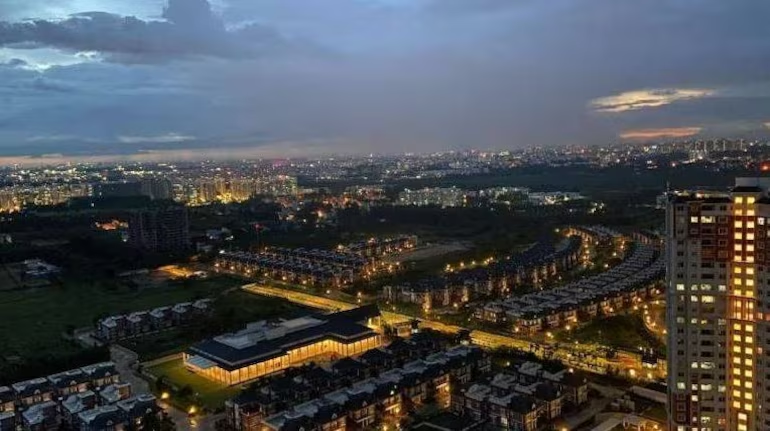News
Warehousing demand is expected to grow around 160 pc: JLL


Despite unfavorable socio-economic environment, warehousing stock in top eight cities, which include, NCR Delhi, Mumbai, Bengaluru, Chennai, Pune, Kolkata, Hyderabad and Ahmedabad has added 27 million sq. ft to reach a total of 238 million sq. ft. in 2020 as per the ‘India Real Estate Outlook – A new growth cycle’ by JLL. Further, the demand is expected to grow around 160% to reach 35 million sq. ft in 2021 if the external conditions stay stable, mainly if there is no relapse of COVID/lockdown and so on. Probably over the next one to two quarters, a clearer picture will emerge.


The warehousing and logistics market in India started gaining impetus with highest supply and absorption in the Q4 of 2020. The demand is expected to increase in 2021 and reach close to 35 million sq. ft of absorption, almost similar in line with 2019 levels, supported by growing demand in sectors such as 3PL and e-commerce. 3PL has become one of the fastest growing segments in the warehousing space, contributing nearly 35% of total net absorption in 2020, highest among all the other sectors. Likewise, many e-commerce categories are expected to do very well, as consumers are making a behavioral shift from buying offline to online. COVID-19 has accelerated e-commerce adoption rates with an increase in UPI transactions by 42% during the lockdown period, leading to an upsurge in the demand for online delivery of essential and non-essential items.
Tier II & III cities are gaining strength in warehousing is eminent from the changing pattern of a typical warehouse sizes with some large transaction sizes of 0.3 – 0.4 million sq. ft, even in cities such as Coimbatore and Lucknow as outliers and ranging between 0.1 – 0.2 million sq. ft in general, as compared to 0.025 – 0.05 million sq. ft (25,000 – 50,000 sq. ft) a few years back.
Scale also brings sophistication (economics of scale) and therefore we have seen pick up in higher infrastructure organised spaces even in Tier II cities. JLL research indicates that warehousing sizes is expected to grow.
Tier II & III cities of significance would include (in no order):
- North: Chandigarh – Rajpura, Jaipur, Lucknow,
- East: Guwahati, Raipur, Patna, Bhubaneshwar,
- West: Surat, Vadodara, Indore,
- South: Coimbatore, Vizag, Vijayawada, Kochi
On the manufacturing front, India stands out as a potential powerhouse with new trends being observed and is expected to continue in the built manufacturing sector such as flex manufacturing. Manufacturing companies are looking for new trends such as rented factories which help in higher CAPEX savings for the owner as it converts CAPEX (land and building) to OPEX (rent). Ready-built factories with pre-constructed/ ready infrastructure as well as built-to-suit factories are available on rent. “Interestingly, the year 2020 saw more than 6.6 million sq. ft of leased manufacturing in predominant manufacturing destinations of Top 8 cities,” said Saravanan Srinivasan, Head Manufacturing practice of Industrial Services, JLL, India.
Outlook 2021
The year 2021 is expected to witness an increase in in-city warehouse requirements to cater to the needs of urban population and for faster and last mile delivery. E-commerce warehousing requirements are penetrating deep inside the cites in the busiest of commercial, retail, and residential areas. Constrained supply is also driving re-positioning / usage change of existing assets like malls, high-street retail, marriage halls, auditoriums, showrooms, and workshops. Grade A properties have been in demand in 2020 and this demand is anticipated to increase in the coming years due to changing developer preferences and adherence to safety and hygiene norms during COVID-19. Specialized storage including cold chain industry as well as omni-channel retail focused warehouses are the other new vogues gaining attraction.
-



 News4 weeks ago
News4 weeks agoKW Delhi 6 Mall Onboards New Brands
-



 News4 weeks ago
News4 weeks agoManasum Senior Living Launches IKIGAI GOA, A Senior Living Community in North Goa, in collaboration with Prescon Homes
-



 News4 weeks ago
News4 weeks agoBridging India Divide: Top 5 Tier- 2 Cities to Focus On
-



 News4 weeks ago
News4 weeks agoCommercial Realty Gets Tech Savvy: Fast Construction, Enhanced Convenience
-



 News3 weeks ago
News3 weeks agoGodrej Properties Sells Rs 3k cr+ Homes of Godrej Zenith, Gurugram, within 3 days
-



 News4 weeks ago
News4 weeks agoMultipoint Connection – A Definite Boon
-



 News3 weeks ago
News3 weeks agoRBI’s Status Quo on Key Policy Rates to Help Maintain the Real Estate Growth Momentum, Say Industry Stalwarts
-



 News2 weeks ago
News2 weeks agoOlive Announces Dhruv Kalro as Co-Founder



























